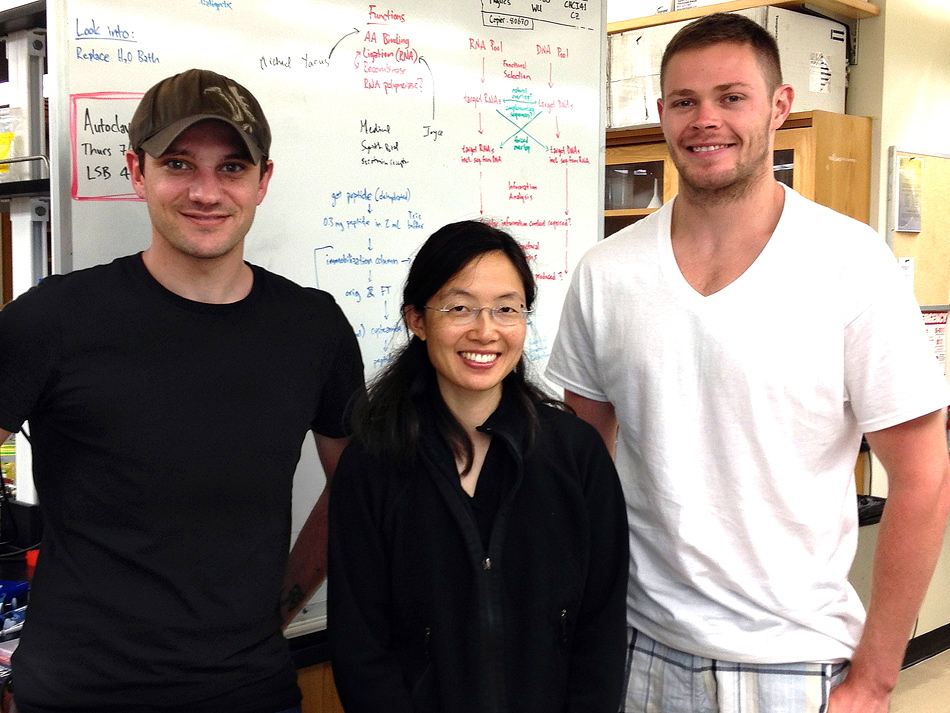
One of UCSB's Newest Faculty Members Receives $1 Million Award
This summer Irene Chen has been spending a lot of time conducting literature searches and reading. As one of UC Santa Barbara's newest professors in the Department of Chemistry and Biochemistry, she wants to make sure her research is not only distinct from what others may be working on, but also interesting.
Chen recently received a grant from the private New York City-based Simons Foundation, which this year started the Simons Collaboration on the Origins of Life. This program, which supports creative, innovative research on a range of topics –– including the development of prebiotic chemistry, the assembly of the first cells, the advent of Darwinian evolution, and the earliest signs of life on young Earth –– awarded 15 investigators with a range of five-year grants. Chen will receive $1 million over the five-year period to support her work on the origins of life.
"I'm thrilled about the award," said Chen. "I feel that the field as a whole is undergoing a renaissance right now, and I'm grateful that the Simons Foundation will enable my lab to participate in that. And speaking as someone who is just starting out, their interest in our work is also invaluable as moral support."
A native Californian hailing from San Diego, Chen spent more than 10 years on the East Coast, earning a B.A. in chemistry from Harvard and an M.D. and Ph.D. in biophysics from the Harvard/M.I.T. MD-PhD Program. As a Bauer Fellow in systems biology she worked to build primitive cells to study information transmission and the evolutionary landscapes of the origin of life –– and she is continuing that line of scientific investigation at UC Santa Barbara.
According to scientists, understanding the processes that led to the emergence of life is one of the great, unsolved scientific problems of our age. The nucleic acid RNA is a molecule central to origin of life research. Some molecules can replicate without enzymes. Scientists believe RNA does this in a process that mimics an early stage of life on Earth, one that existed even before enzymes evolved more than 3.5 billion years ago, although the process has yet to be replicated.
According to Chen, RNA's dual functions — both as genetic information and as a catalyst — make it an ideal candidate for studying emerging functions. RNA sequences have four building blocks: a, c, g, and u, each of which can be a possibility. That means the number of sequences is astronomical.
Each sequence has a fitness for any particular activity, which defines a fitness landscape. Evolution is the process of moving around on the landscape, usually up toward high fitness peaks. The Chen Lab is exploring what these landscapes look like for biomolecules by evolving a huge population of molecules containing nearly all possible sequences of a given length. This massive sequencing reveals a first look into the comprehensive structure of molecular fitness landscapes.
The first activity Chen's lab tried was a proof of principle experiment for recruitment of a nutrient, GTP, for an early cell. They examined the activity landscape for RNAs with the ability to interact with GTP, an activated form of g.
"What we'd really like to know is how each possible RNA sequence could behave for a particular function," said Chen. "We'd like to know which of the sequences are inactive, which are active, and which are evolutionary pathways between activity and inactivity. That hasn't been possible up until a few years ago, when next-generation sequencing really became accessible. Now that we have the ability to gather so much information, we can fill in the activity landscape for RNA. So my work focuses on trying to understand how functionality is distributed in this huge space of possible sequences."
Chen's work will also investigate the roles of changing environments and adaptation from pre-existing functions in evolutionary innovation. "Comprehensive experimental exploration of the entire space of possible sequences combined with computational analysis will enable us to build a quantitative understanding of the earliest evolutionary stages of life," she said.
"I also want to look at things that might be interesting from a biomedical perspective: for example, interacting with medically interesting proteins or examining RNA components that can be used for building organisms," she added. "I'd like to broaden my horizons to include more application."
Related Links



